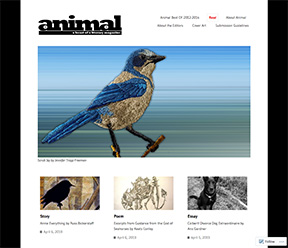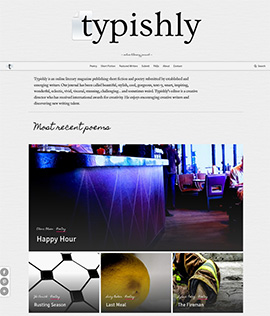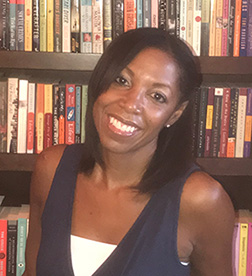
promising relationship gone bad. The joys and challenges of parenthood. Triumph over a difficult childhood. Many stories center around themes like these—with characters acting out and working through emotional situations and events. While these stories are definitely poignant and universal, there are plenty of other topics worth exploring in your writing. Along those lines, numerous literary magazines actively solicit writing on specific, distinct topics, encouraging writers to spread their wings by tackling diverse subject matter.
Reasons to expand your breadth of writing themes abound. Growth, truth, and meaning can arise from unexpected places, so it’s wise to mine many aspects of life for literary gold. You never know where new source material will lead and what it may spark in terms of creativity. The brain often makes surprising, unexpected connections that can offer additional originality and flavor to your writing. Also, writers commonly explore their own inner lives and that of their characters, but they can additionally serve readers by observing and examining the world around them. As a result, they help provide a window to the world, bringing unique experiences to the public that some may have yet to encounter or were unable to access.
A variety of publications are looking for stories dealing with different, particular content. Poor Yorick Journal, for example, solicits works “inspired by rediscovered objects or images.” In a featured creative nonfiction piece entitled “The Stranger in the Box,” author Sara Etgen-Baker writes about her great-grandfather’s photo and diary. Reflecting on the stories and love letters of her ancestor leads to a deep sense of comfort and inner strength, as well as an indelible connection to the past.

Another outlet, Animal: A Beast of a Literary Magazine, creates a space where writers can “explore the ephemeral boundary between human and animal.” In “Bird in a Brick House,” for instance, Judith Roney renders a study of ravens and their characteristics, exquisitely relating them to her complex family relationships.
DIAGRAM is an online journal that prides itself on operating outside of the norm. They publish experimental work, including text, art, and creative schematics. “The Barbie Family and Friends Tree,” for example, includes an inventory of the iconic doll’s siblings, pets, and international and celebrity incarnations, as well as the illustrious lineage of longstanding boyfriend Ken.
Other publications aiming for stories that address specific topics are as varied as Cartridge Lit, which calls for work inspired by video games. Spartan wants “minimalist prose,” as does 101 Words, which solely publishes, you guessed it, stories with a predetermined word count.
I began my own personal journey to publication by submitting work to magazines such as these. I’d struggled with completing a novel for a couple of years and was feeling stalled. As we can all affirm and confirm, writing can be a lonely endeavor, and I believed that interaction with the literary community might assist me in regaining momentum. I signed up for an online workshop and wrote four short pieces as a part of the course. The instructor advised me to send my work out as part and parcel of engaging with the industry and getting my bearings; and with her encouragement, I did just that.
“Using these tactics, I’ve been fortunate enough to have eighteen stories and essays accepted for publication over the past year.”
I’d written a travel piece on my family’s recent trip to Bali; and after a few rejections, it was ultimately accepted by a publication that was specifically seeking humorous travel writing. An uplifting piece I wrote that focused on a character’s romantic crush was selected by a journal, Edify Fiction, that solely publishes upbeat, optimistic stories. Two stories I wrote with a satirical edge were picked up by magazines that focused on that genre.
After those small successes, I was off to the races and began looking through short stories, flash fiction, and creative nonfiction essays I had written in my spare time and for other classes, first editing and polishing them, then scouring clearinghouse sites, like Duotrope and Submittable, for outlets that might appreciate the content or style of each story. While I dealt with my fair share of rejection, which took some getting used to, each acceptance was a victory as well as confirmation that I was on the right path.

In addition to submitting work I’d written in classes and on my own, I adopted another strategy in order to increase my chances of experiencing the delights of publication. Many literary magazines seek stories and essays in response to their stated prompts for an upcoming issue. Outlets—such as Typishly, 3 Elements, and the A3Review post specific themes on a rotating basis. Generating work according to these prompts and themes often increases the opportunity for publication—writers know that the editor is looking for specific subject matter, so writing with a mind towards those topics is half the battle. In response to The Prompt’s call for submissions on the topic “suckered,” I wrote a creative nonfiction essay about a local cult’s (failed!) attempt to recruit me into its fold. Literary Mama wanted stories about how moms had used a book to discuss a difficult topic with their children, so I penned an essay that talked about how I used the triumphant story of an escaped slave to talk to my children about the history of slavery.
Another publication wanted stories on the theme of nostalgia; in response, I wrote a short fictional piece featuring a character who missed the ordinary routine of her now-absent husband. The piece was not chosen by that publication; but after further work on it based on the editor’s comments, I submitted it elsewhere, and it was published in Toasted Cheese.
Using these tactics, I’ve been fortunate enough to have eighteen stories and essays accepted for publication over the past year. As a result of my experience, I’m convinced that writers can achieve publication by submitting a wide variety of work to an even wider variety of reputable outlets, even if they are lesser known.
As you can see, there are a host of literary magazines standing by to read your unique stories. Expand your view of worthwhile fictional themes and how a meaningful story can look and feel. Be sure to read a few issues of any magazine that you’re considering submitting work to in order to get a true sense of what the editors are looking for, increasing your chances of publication. And of course, don’t forget WOW! Women on Writing as an outlet for your unique submissions—the site seeks work that pushes boundaries and offers new perspectives. If your work is moving and creative, WOW! wants to read it. Write on!
Switch it up! More markets to try:
Hunting for outlets for your atypical story or poem? Looking for new topics and sources of inspiration? Take some time to explore the following magazines, journals, and ezines—they’re highly receptive to work with specific and often unusual themes!
- Does music play an integral role in your story’s plot or the lives of your characters? Explore Half Mystic Journal and Brilliant Corners as possible outlets.
- No one would dispute that there’s plenty of fodder for satire these days! Calliope and of course, The Satirist invite your creative musings on issues of the day.
- Writers who draw inspiration from artwork and photos will enjoy submitting to Visual Verse, Found Polaroids, and The Light Ekphrastic, all of which provide images as starting points for the work they consider.
- “All of us who write about the past feel a deep and haunting connection with it,” say the editors at Copperfield Review, who, along with the Museum of Americana, publish historical fiction.
- Submit tales of your travel adventures (or those of your characters!) to Lowestoft Chronicle, Folded Word, and Panorama.
- Rogue Agent, Kaleidoscope, and Blanket Sea ask writers for stories that address themes of chronic illness, disability, and the body.
- Work that makes a statement by challenging the status quo is welcomed by Winter Tangerine, CURA, and Rivulet—journals that focus on issues of equality, social justice, and reform.
- Several magazines, like The Disconnect and TERSE., welcome stories that deal with the intersection of technology and culture.
- Uplifting, optimistic stories, often containing happy endings, may find a home at Peacock Journal, and Sunlit Story Time.
- Submit writing that encompasses nature and reflections on the environment to Ecotone, and Flyway.
- Stories with themes concerning trauma and healing are sought by publications, such as Snapdragon and The Healing Muse.
- Written a piece that would be best expressed aloud? Submit to Remastered Words and Liars’ League, all of whom consider short stories for podcasts and live recordings.
- Stories held close to your heart that have seen more than their share of rejection letters may find a place in either the aptly-named Rejected Lit, whose motto is “poetry and prose that doesn’t fit in.”
***

Kimberly Lee left the practice of law some years ago to focus on motherhood, community work, and creative pursuits. Her work has appeared or is forthcoming in Literary Mama, The Sun, (mac)ro(mic), Toasted Cheese, Thread, Indiana Voice Journal, Soft Cartel, Toyon, The Prompt, and Foliate Oak, amongst others. She lives in Southern California with her husband and three children and is currently at work on her first novel.